Since I have moved to Kanagawa prefecture from Tokyo 4 years ago I visited Yokosuka a few times. It is a large coastal city with a population of around 410,000 people, located just across Tokyo Bay from Yokohama and Chiba. Long coastal hike from Mabori Kaigan to Uraga and further towards Kurihama, all these being parts of Yokosuka City, is one of my favorite seaside walks. This post is more about Yokosuka Central itself. The more I walked there, the more I felt curious about the history of the place and people who formed it or were related.
Yokosuka stayed very much intact during WWII as Americans did not bomb it having already chosen the site as its future naval base in the Pacific. Now it is a home to the HQ of the US 7th Fleet and at the same time one of the key bases of the Japanese Navy.
I started my wander from Verny Park which is near Shioiri station. The park is named after Francois Verny, French naval engineer who came to Japan at the request of Tokugawa government at 1865 (at that time shogun was Tokugawa Nobuyasu, the 15th and the last shogun of Tokugawa clan). Actually, Tokugawa government was very active in “recruiting” foreigners (see later story of William Adams). The main achievement of Verny is building of Yokosuka Arsenal which is still being used as dry docks by the U.S. 7th Fleet. The Arsenal was first facility in Japan to lay down foundation for now common “civilized” industrial standards: set working hours, metric system and regular health checks.
Continuing on this “military” thread, Yokosuka is now currently a base of JS Izumo, former helicopter carrier, now being modernized into light aircraft carrier capable of housing F35B fighter planes.
On a higher scale, another naval upgrade is a swap between aircraft carrier USS Ronald Regan with a home port in Yokosuka to USS George Washington which is planned for the next year. “George” will carry quite a revolutionary equipment - Boeing MQ-25A Stingray, the world ‘s first aircraft carrier based refueling drone. So, US fighter planes, like Super Hornet, Growler etc. will be able to refuel at around 800 km from the carrier. Probably situation around Taiwan is taken seriously inside the top brass.
Military mood aside, the park is sunny, full of kids, couples and laughter. You can even play piano here.
It is nearly mid-day, time to eat something. One of the “marketed” staple foods of Yokosuka is Navy Burger. I normally don’t eat burgers - not sure of ingredients, my mouth is not wide enough to bite some, plus I always create a mess with them. But being in “Yokosuka” and in a slightly “Navy” mood I ordered one at a canteen near the end of the park. Eatable, but not something I want to have again.
Next destination is Doibuta shopping and eating street which is not far from Shioiri station. It has some American flavour as many shops here started trading after WWII catering to American GI.
I got the feeling that it was not the place where locals go, but interesting enough to visit once. Probably more fun in the evening.
At the end of Dobuita strip I turned right towards Otaki shotengai, then walked towards Mikasa Park. The park’s main theme is battleship museum Mikasa which served gloriously during Russo-Japanese war.
Admiral Togo, who defeated Russian Fleet at the Battle of Tsushima in May 1905 is often referred to as “The Nelson of the East”. I believe the victory at Tsushima was an easy one, because Japanese had around 108 combatants including torpedo boats vs 29 on the Russian side. Togo who died at the age of 86 had an interesting life. He studied his naval skills for seven years in England, kept his journals in English and for 10 years after his naval career was a tutor to crown prince Hirohito, the future Emperor Showa, the longest-lived and the longest-reigned (1926-1989) Japanese emperor.
Good-bye Mr. Togo. My next destination is Tsukayama Park. I return back towards Verny Park, but make a small detour to see Yokosuka Port Market.
Next, I pass Yokosuka train station and soon start strolling through a small residential area.
Kashima Shrine.
A sanctuary for stray cats en route. You can adopt one from here.
Next is a steep climb to the park.
Voila!
Good view from the top. Yokohama on the left, Chiba prefecture- right.
I spot the sign. Actually from this park I can walk to Ogusuyama (Mount Ogusu), only around 4.5 km.
One of the reasons I came here was to see the grave of an English sailor/navigator William Adams. He was shipwrecked near Japanese coast at around 1600, formed a strong bond with then shogun Tokugawa Ieyasu, became his trade, shipbuilding and diplomacy adviser and spent the rest of his days in Japan. He actually was forbidden to leave Japan but was compensated handsomely and awarded a noble title. If you read “Shogun” by James Clavell, he is one of the main characters there featured as “John Blackthorne”. Japanese called him Miura Anjin. More about Adams in this interesting article.
Another interesting life…
It was a big day, the descend towards the station is steep, but luckily no steps (knee pain came back).
“How was it?”- asking me a dog, who is looking a bit bored, but still greeting passersby. “Great day, buddy!”
Soon I see the train station Anjinzuka. Named after Adams, the meaning is “Anjin Hill”.
I might come here again to walk to Mount Ogusu, or hike from Ogusu to Tsukayama Park. But no burgers (:
Finally, below is a walk map.
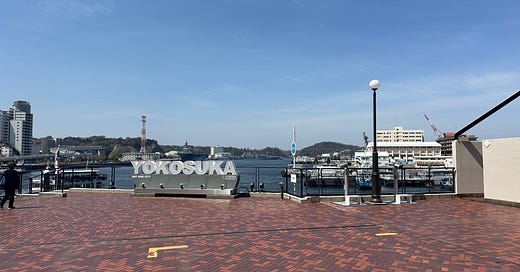



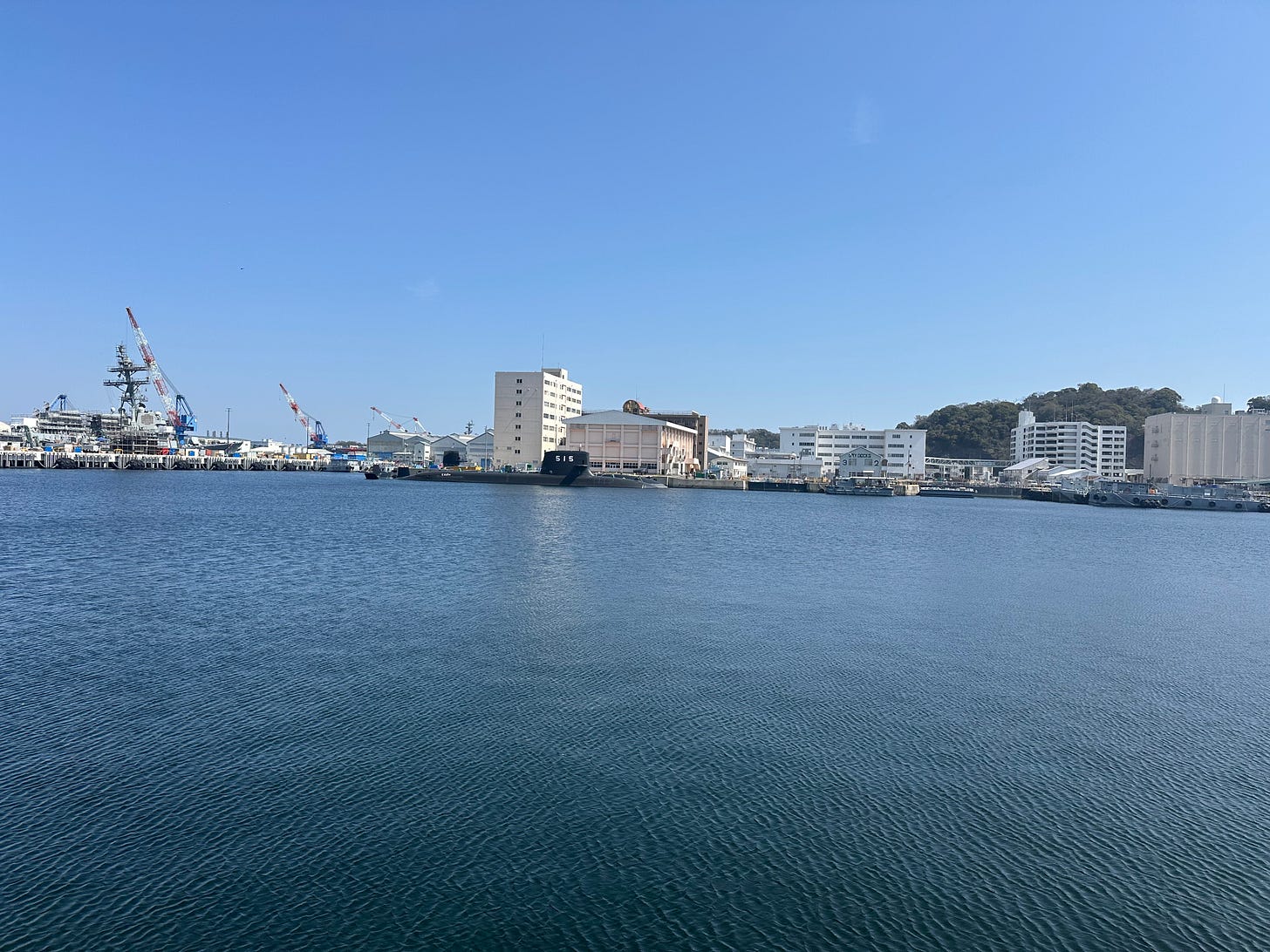
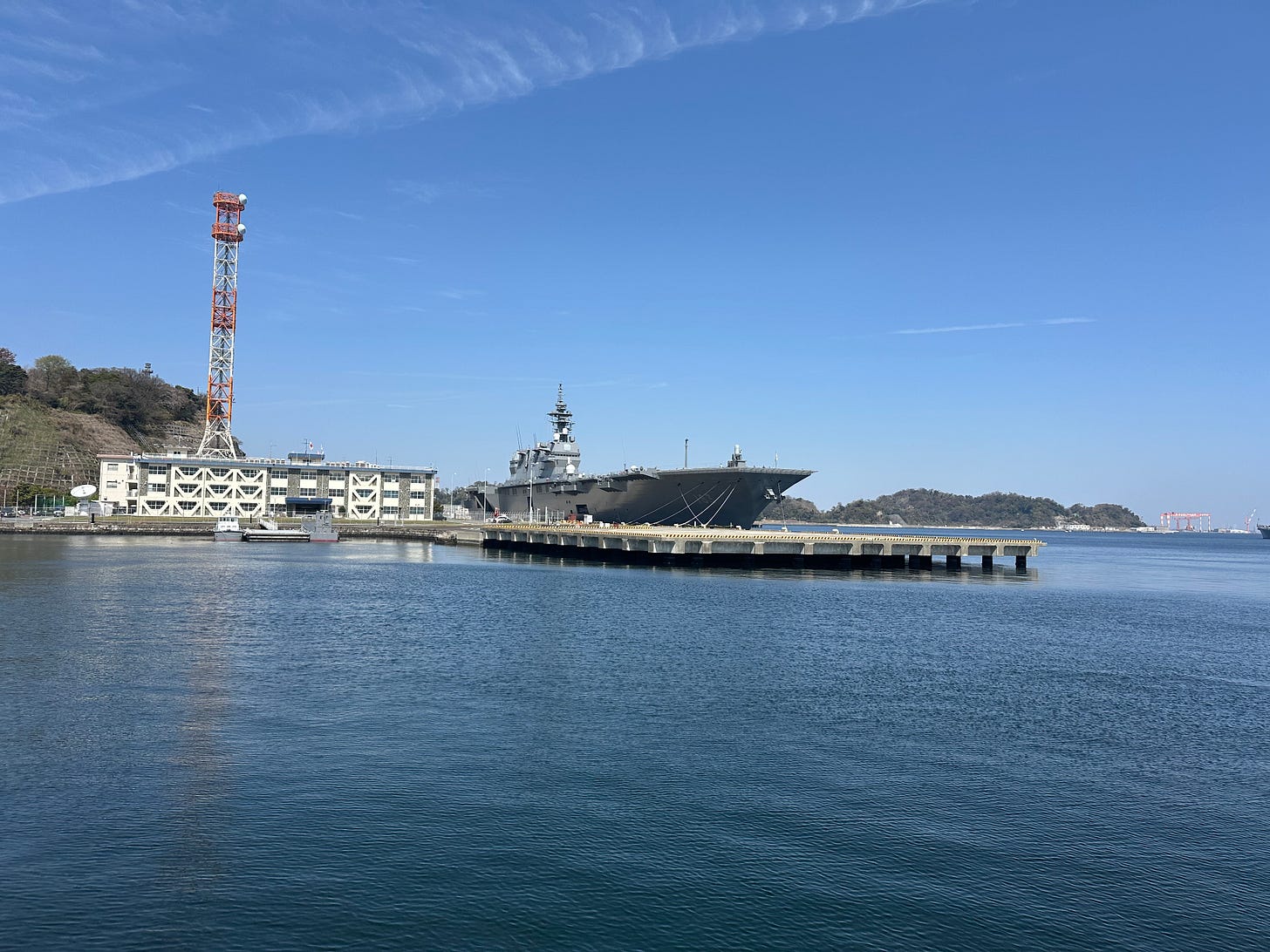
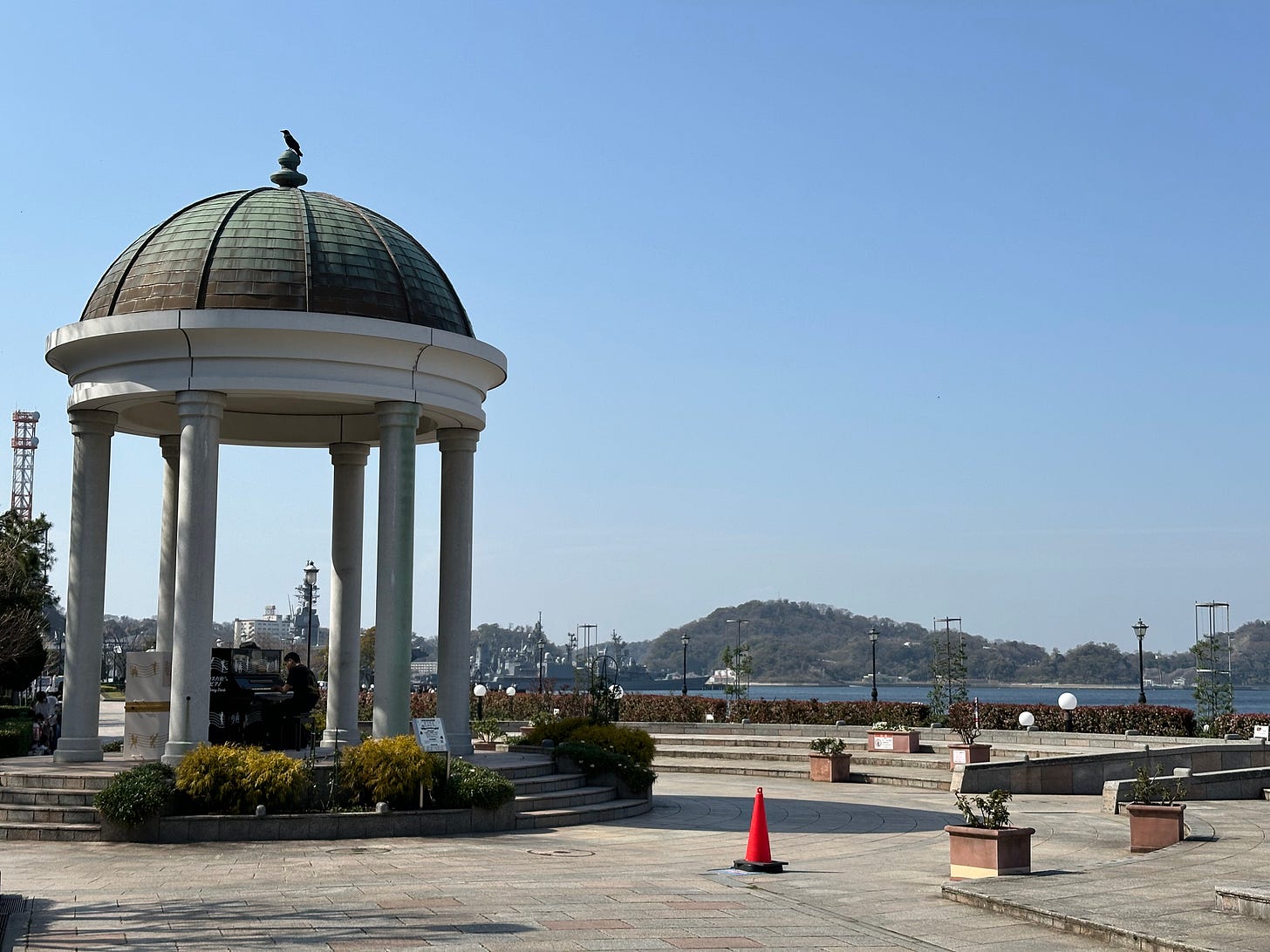
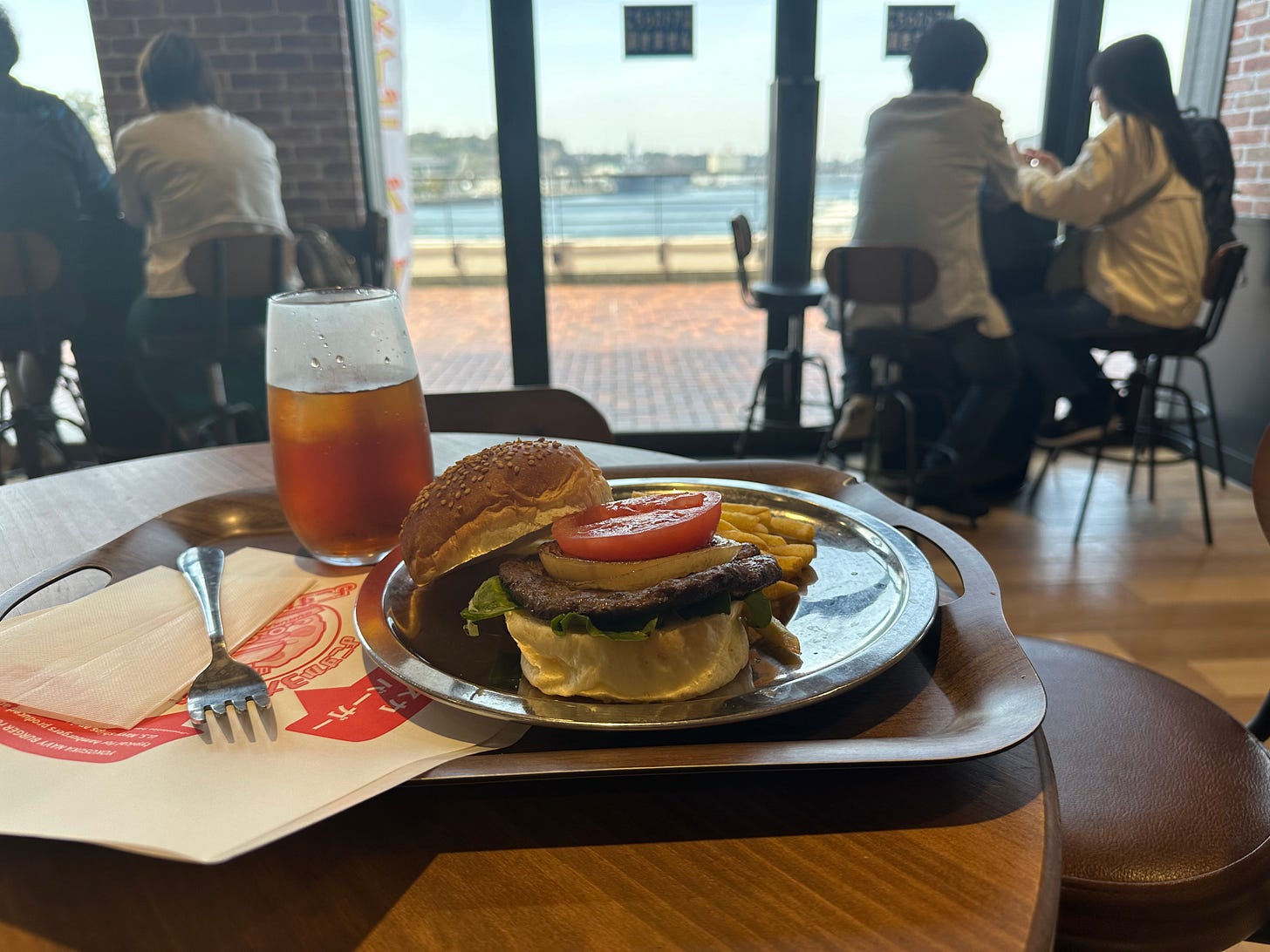
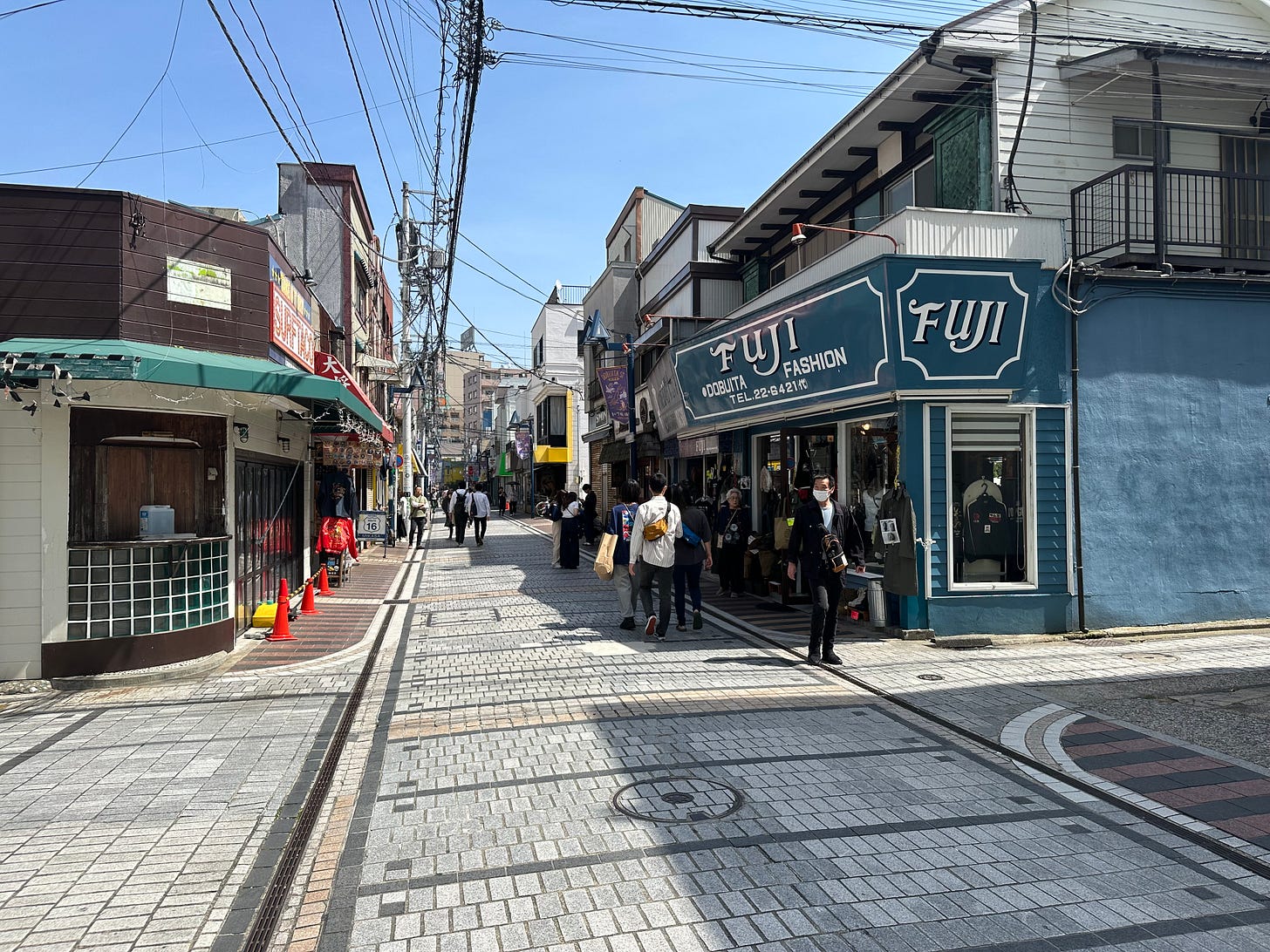
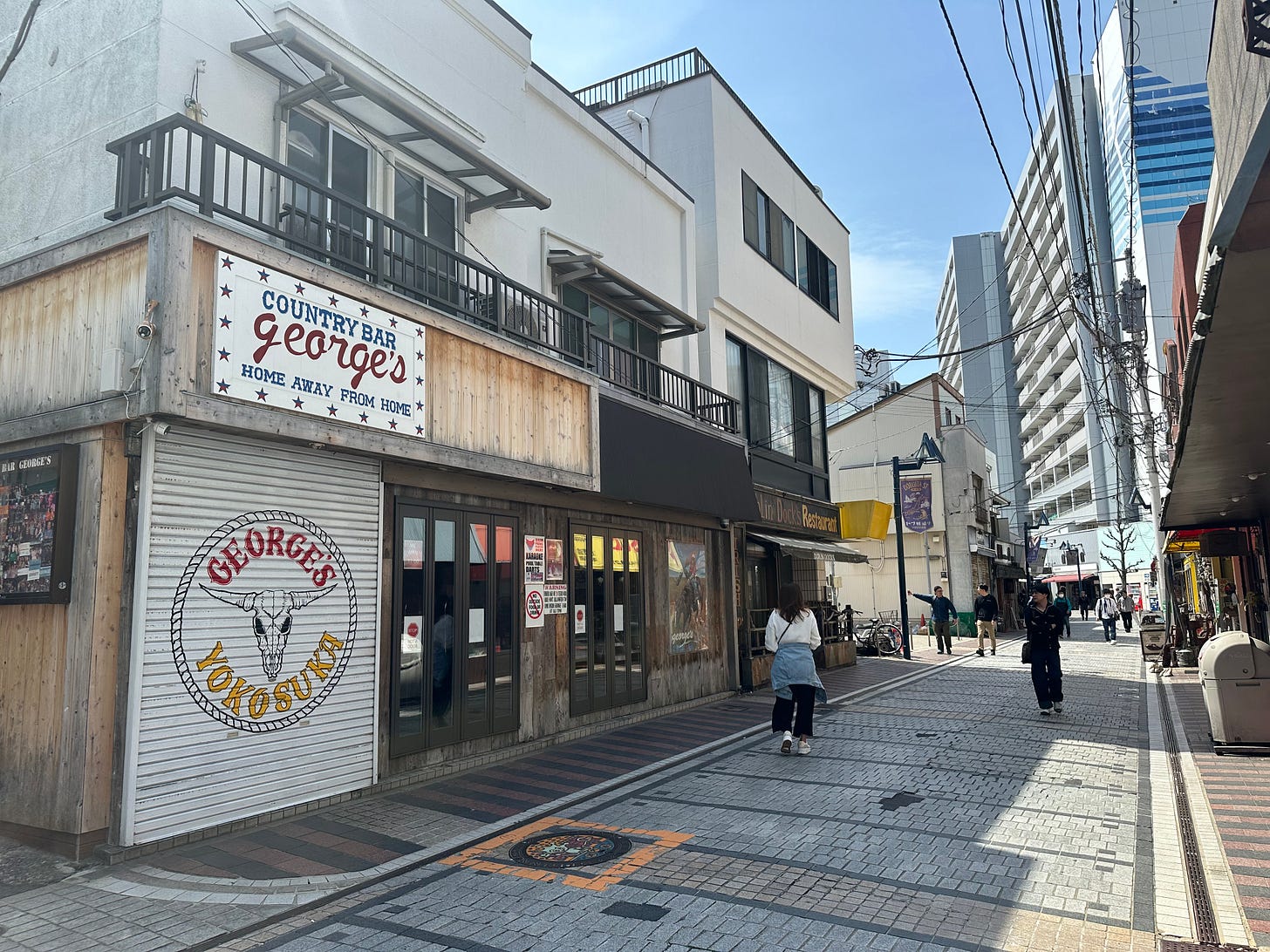
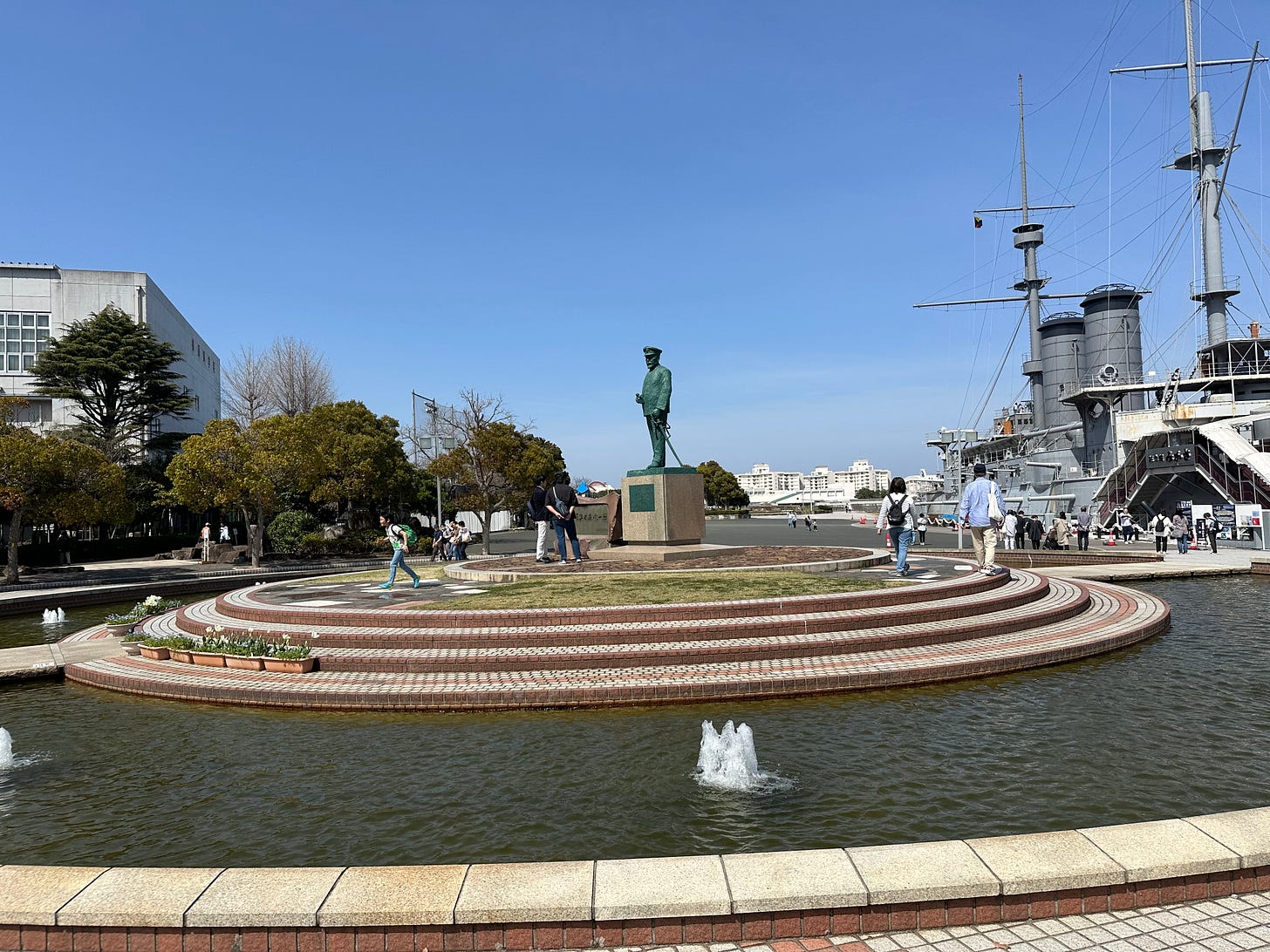
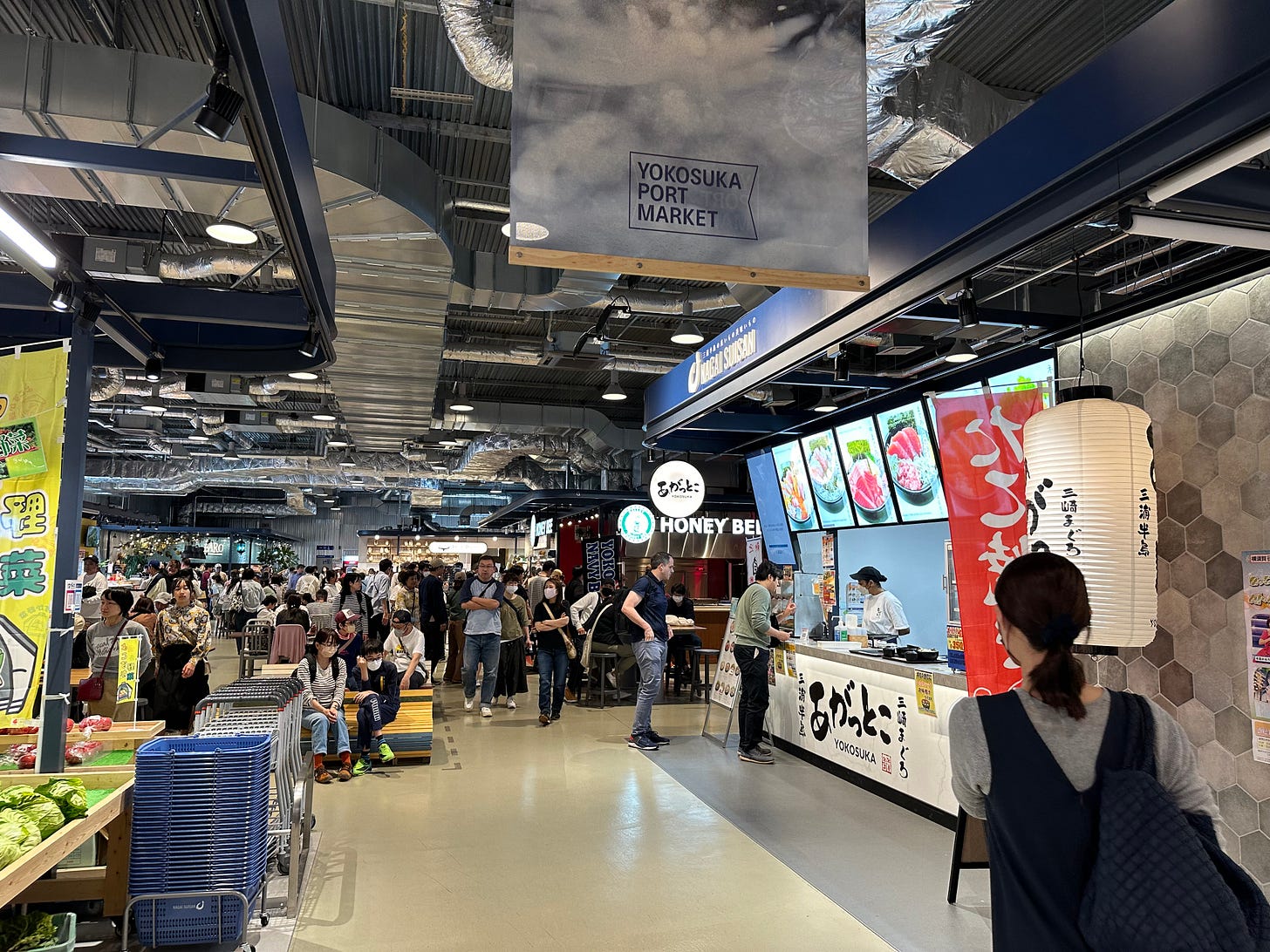
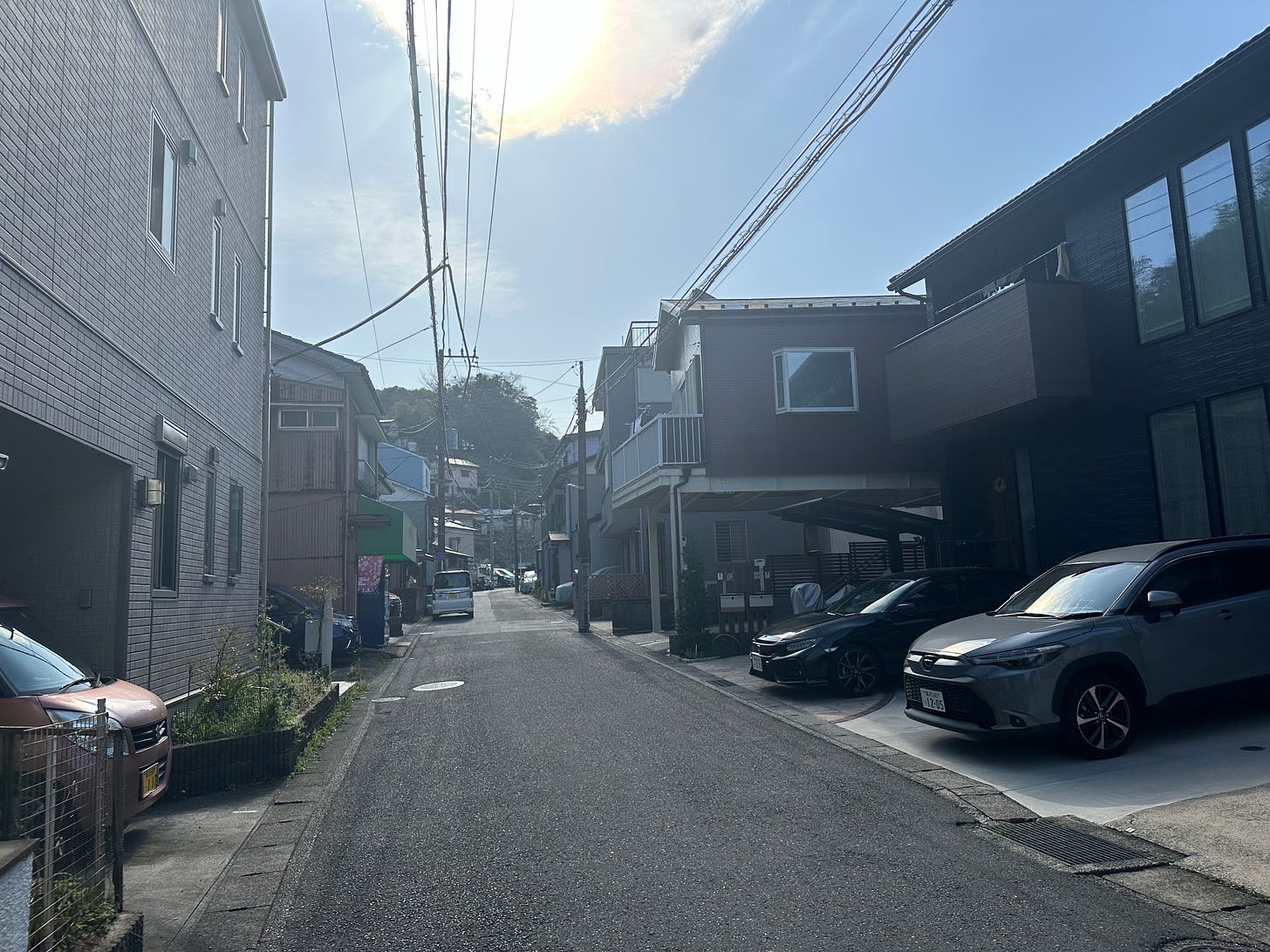
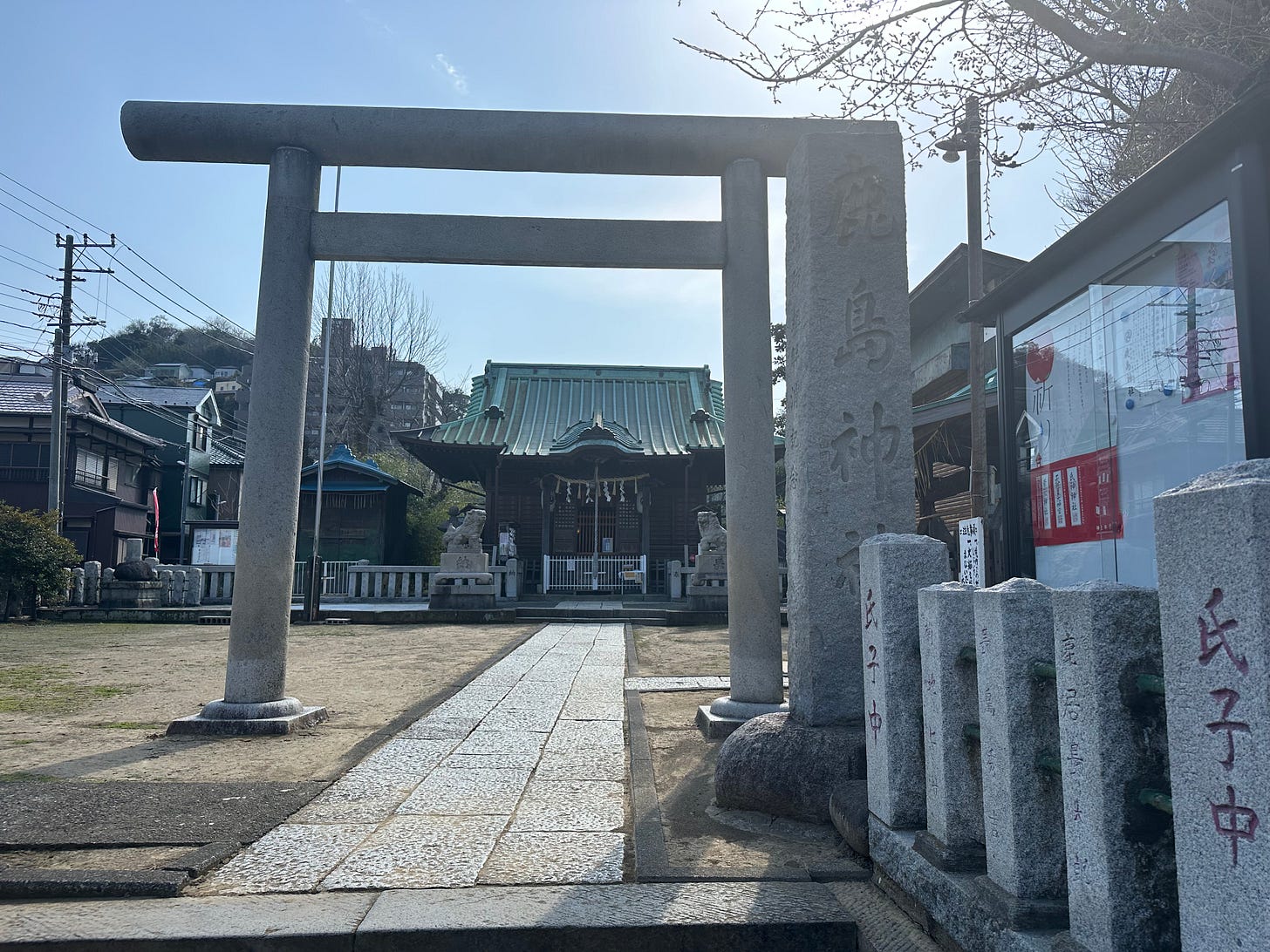
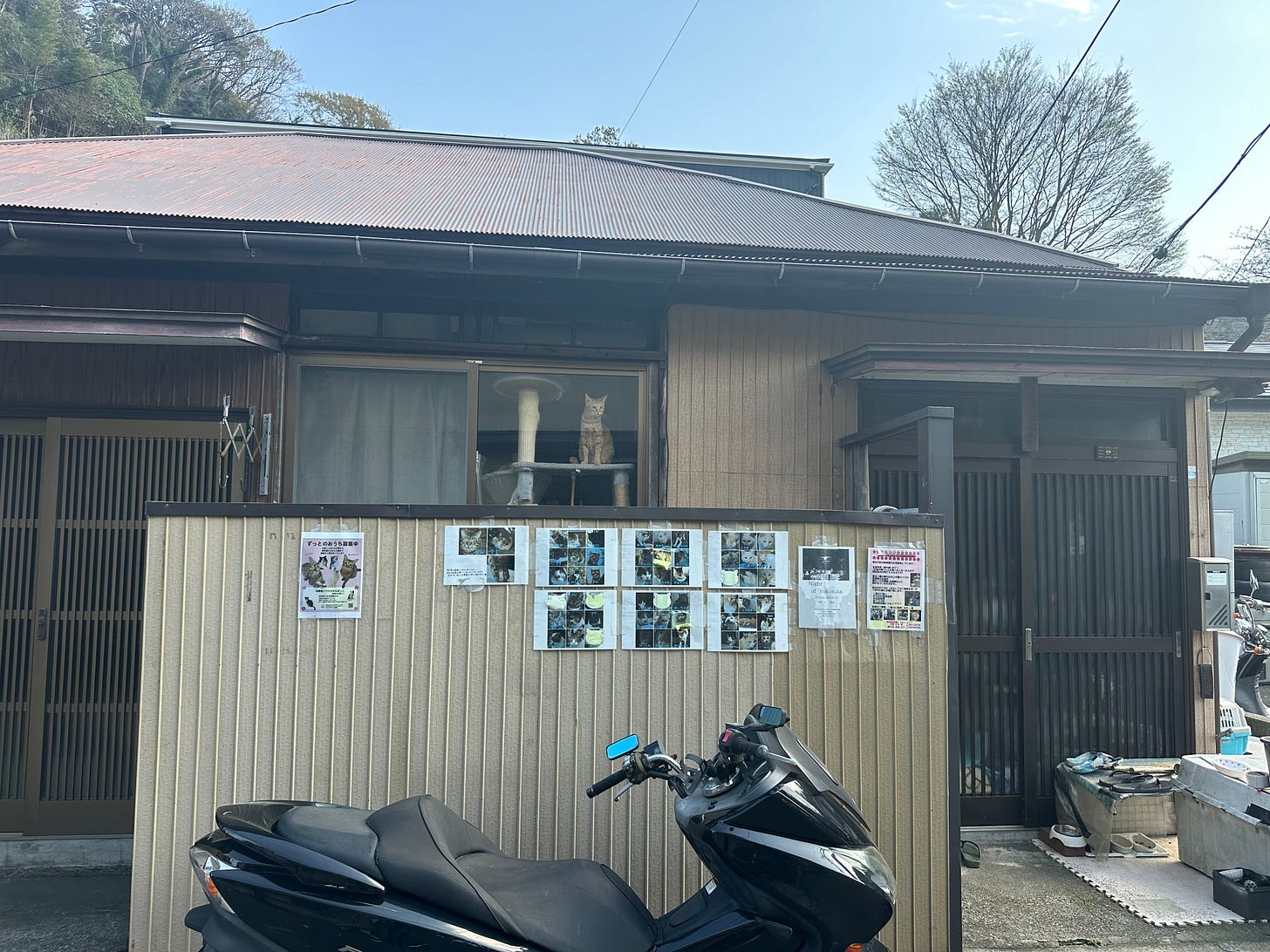
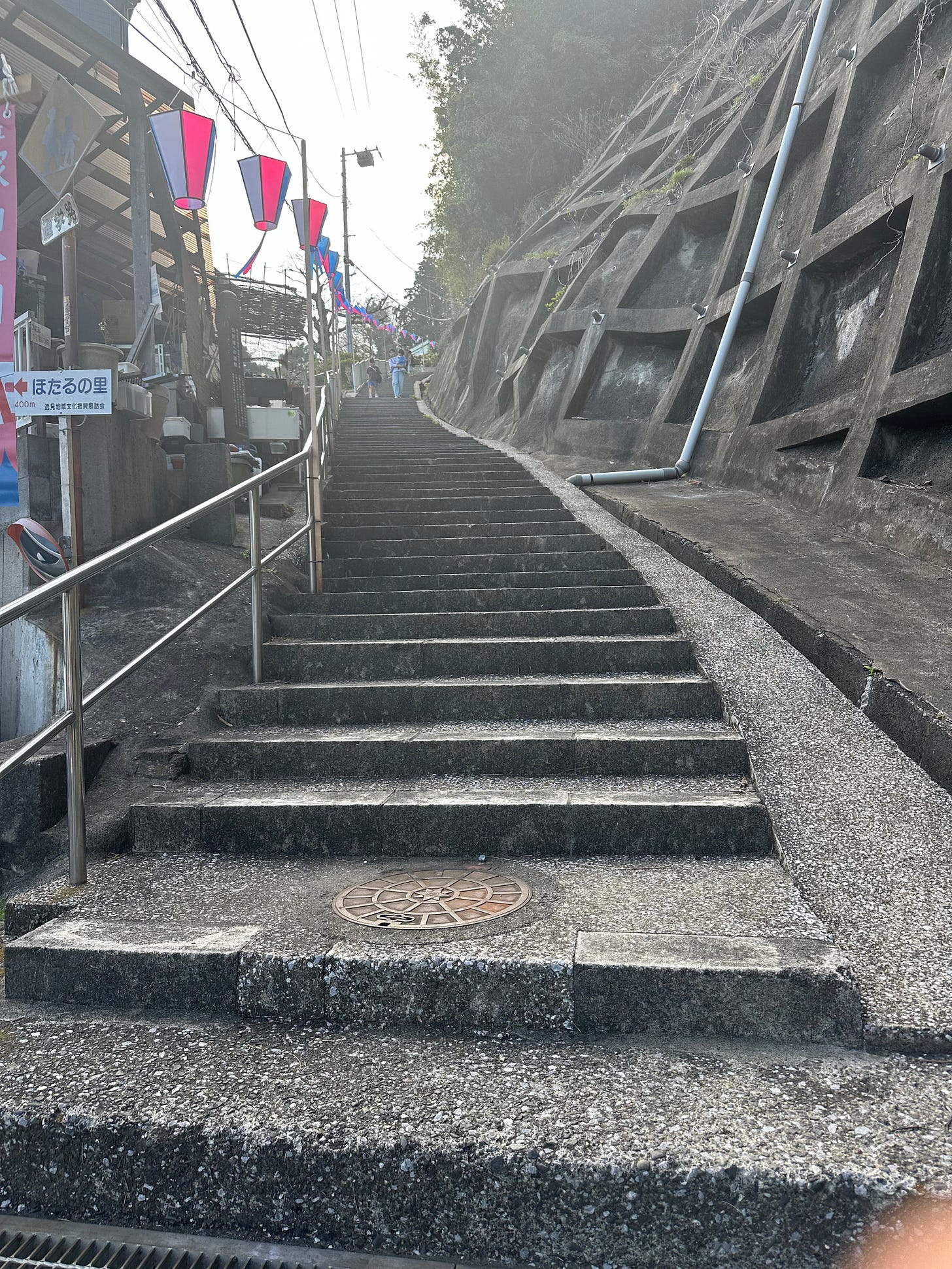
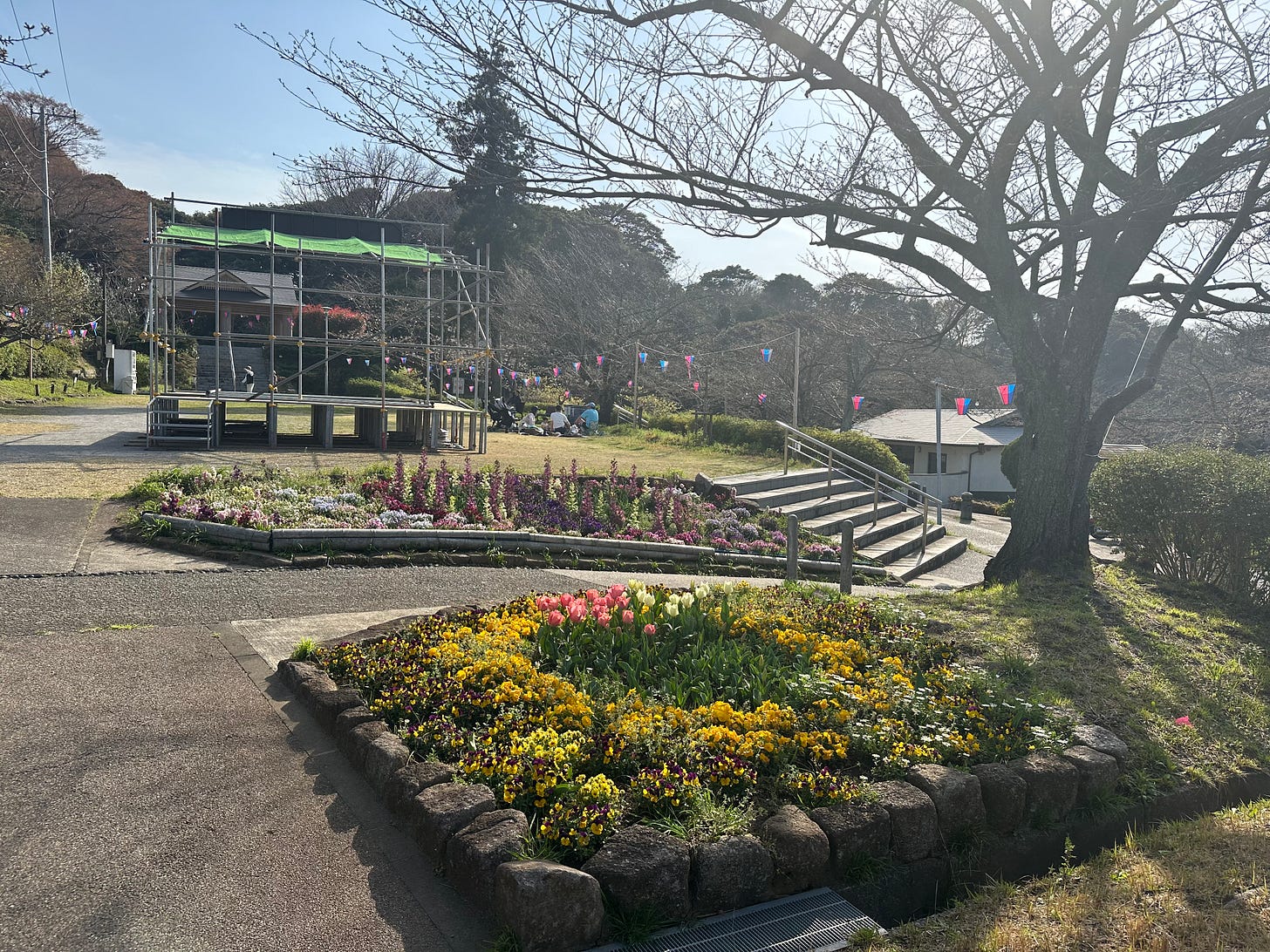

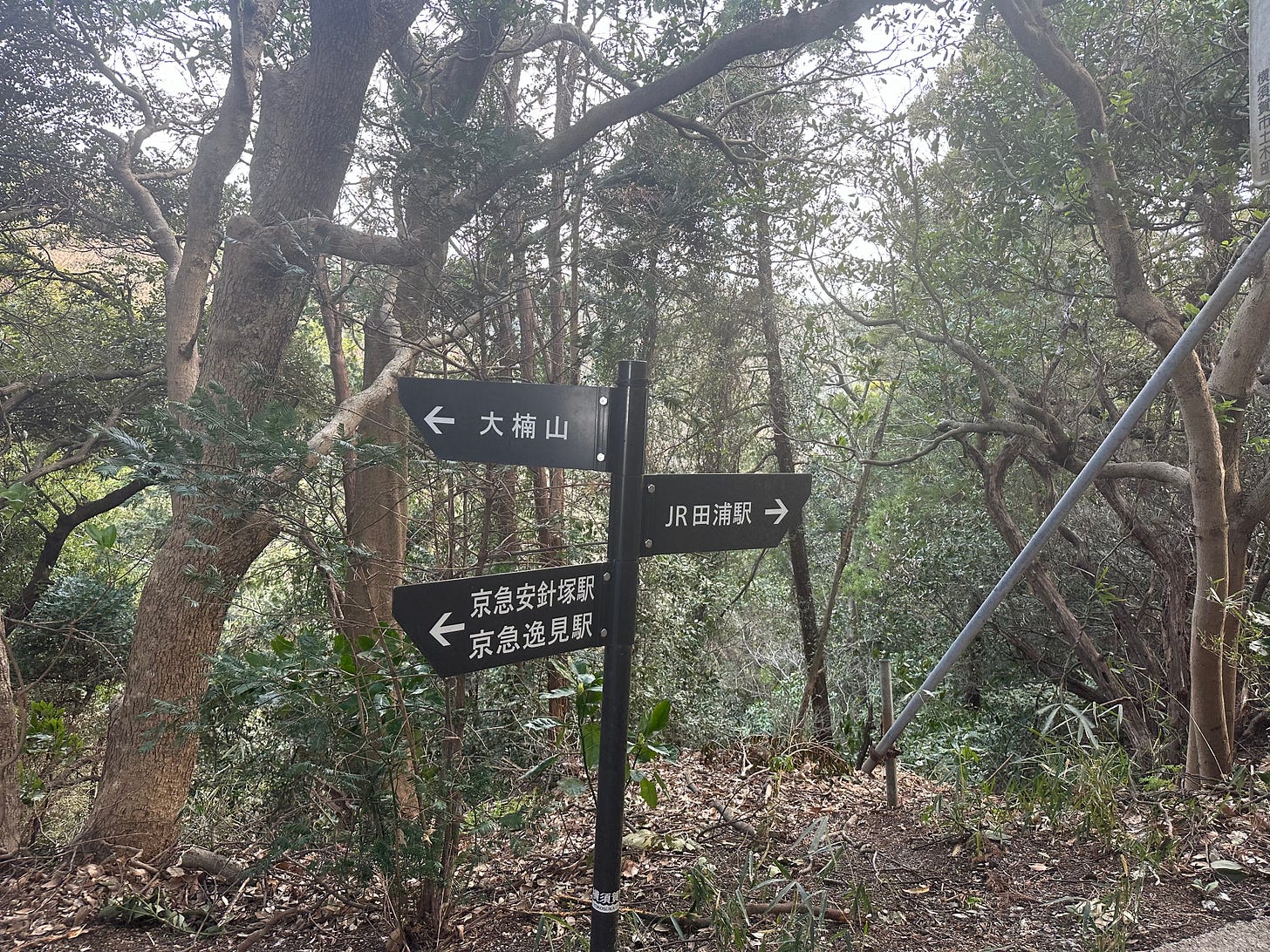
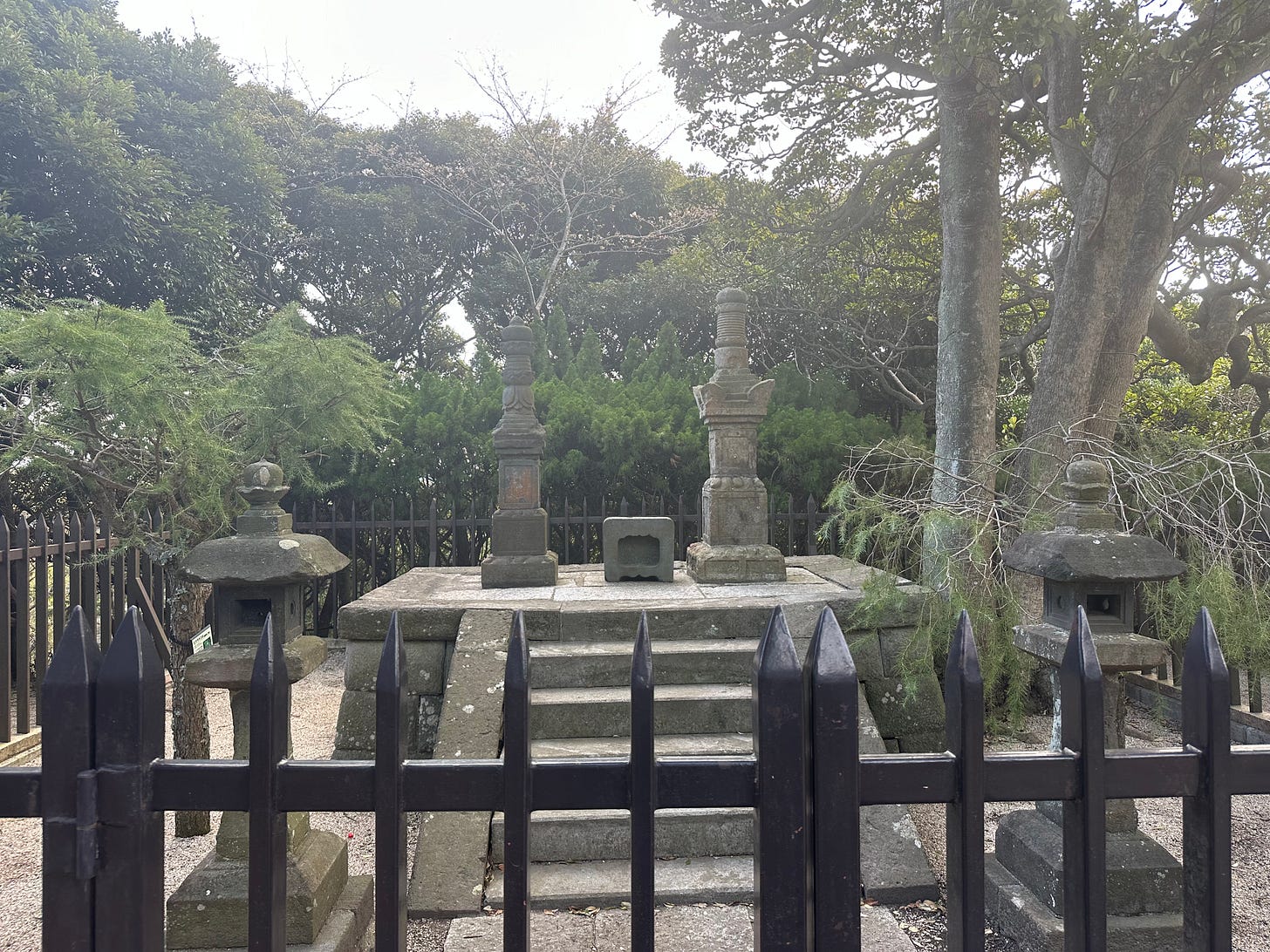
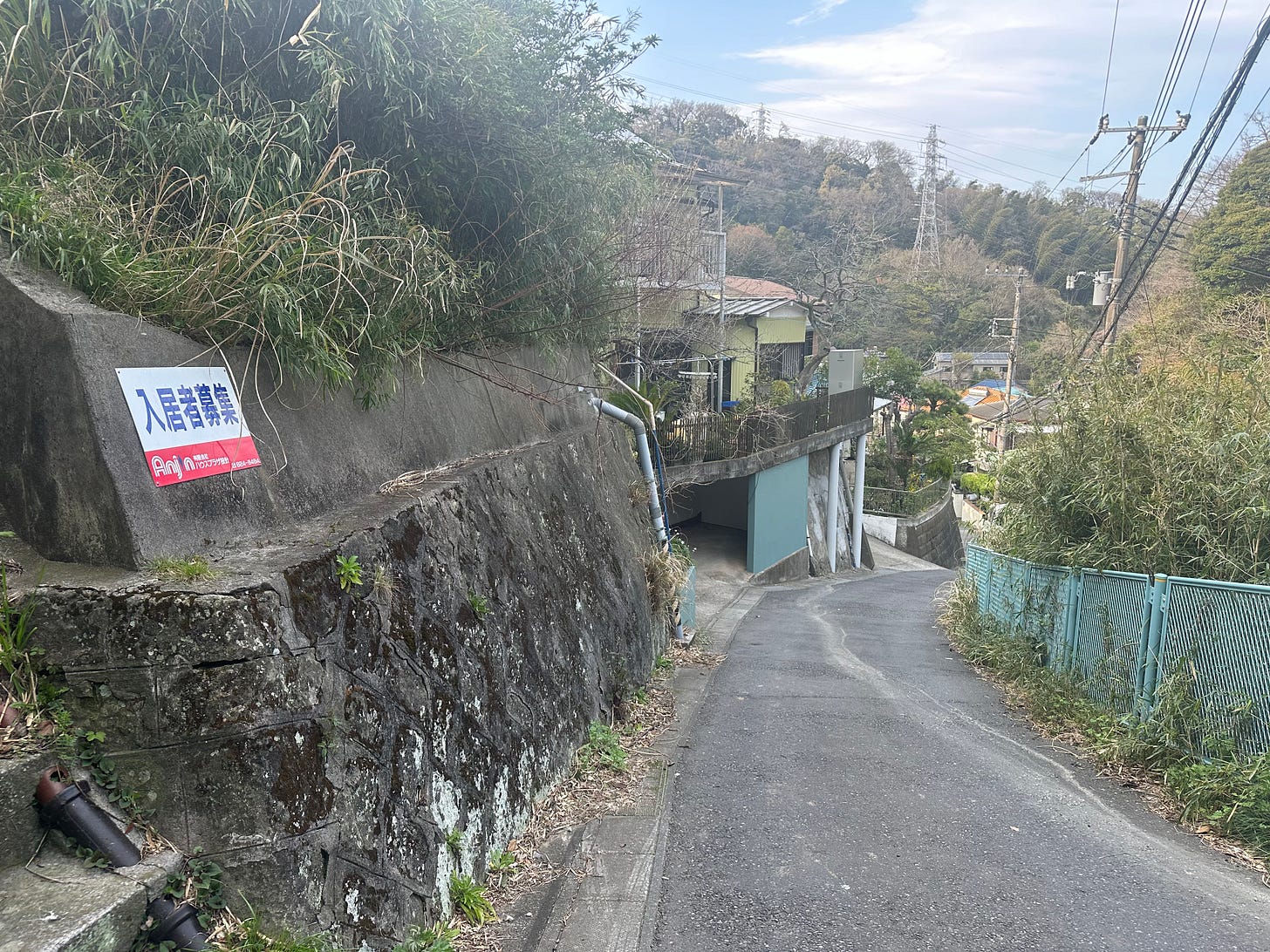
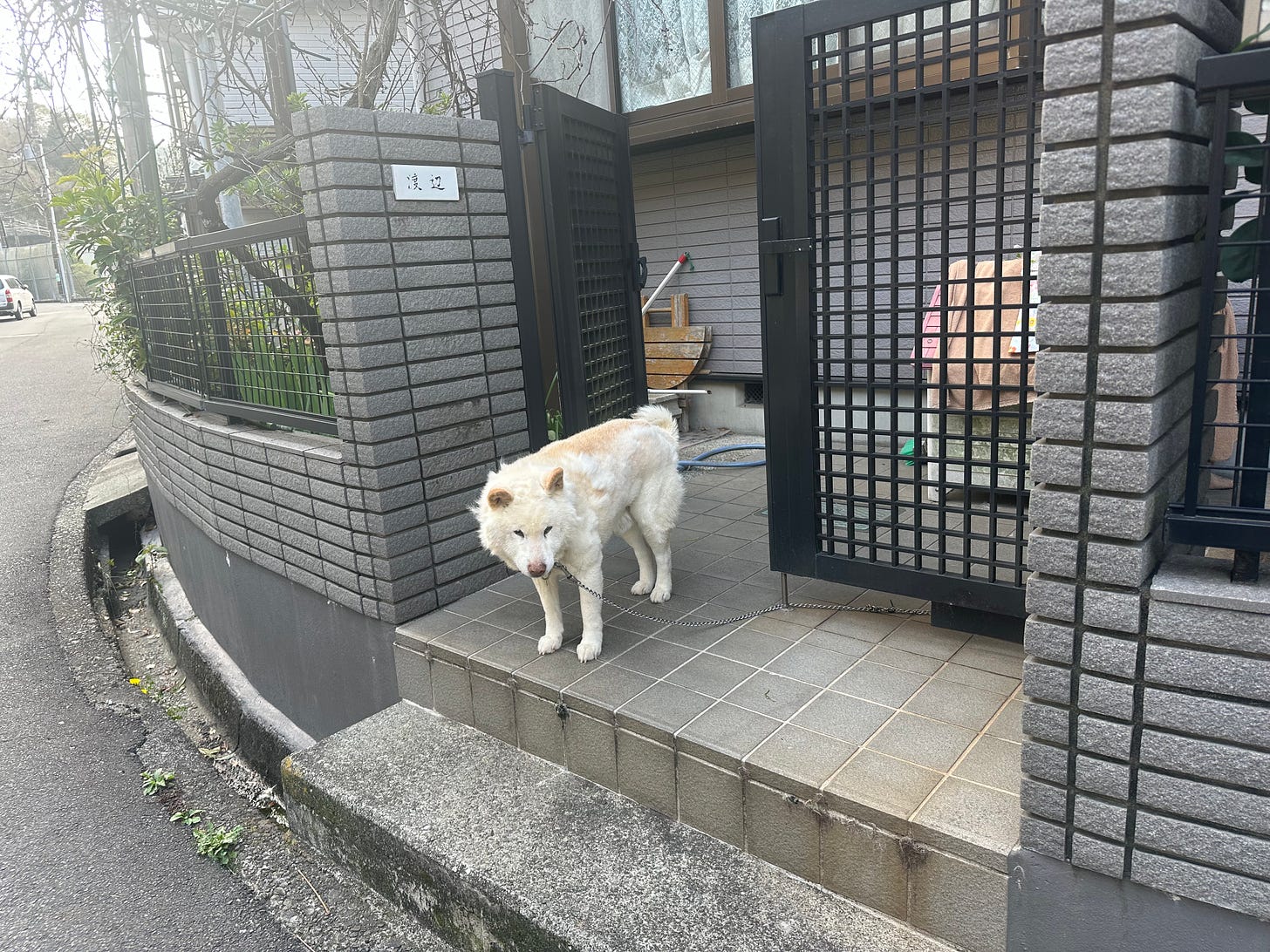
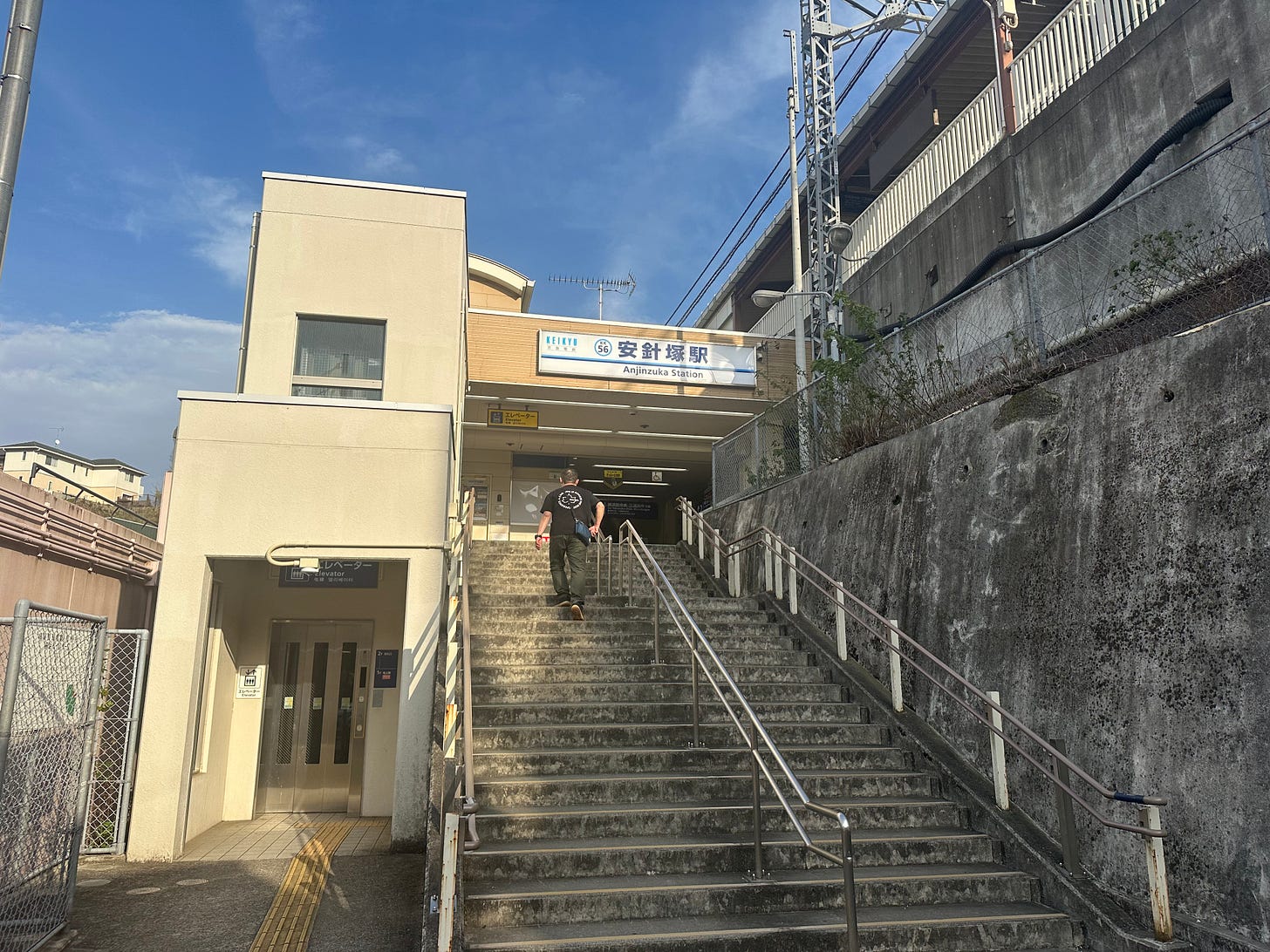

I have been there once, quite a nice place to stroll and the battleship Mikasa is very interesting to explore - I noted that a lot of the steelwork was imported from UK !